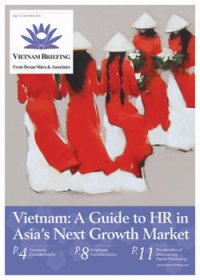Vietnam Coffee Production to Decline in 2015
HCMC – Global coffee demand is expected to increase over the next year, however production in Vietnam, the world’s second largest producer of robusta beans, is forecast to decline due to factors such as inclement weather, aging trees, lack of moisture, and disease. Additionally, many Vietnamese farmers have been holding back their crops from the market as a way to further increase prices.
The combination of increasing demand and decrease in supply from Vietnam and other countries is expected to have a significant effect on the price of robusta beans. In its latest quarterly report, Volcafe, which is the coffee arm of commodity trader ED & F Man, stated that robusta production for the 2014-15 crop year will fall 4.5 percent to 66.3 million 60kg bags. Demand, however, is expected to increase 2.8 percent to 69.3 million 60kg bags. This means there should be a deficit of about 3 million 60kg bags that won’t be met by the market. This would be the largest shortfall since 2006.
 RELATED: Dezan Shira & Associates’ Business Advisory Services
RELATED: Dezan Shira & Associates’ Business Advisory Services
Many analysts have blamed the recent decreases in supply on hoarding by the Vietnamese coffee growers – many growers are sitting on sizable stores of beans after last year’s record crop. Coffee growers are eager to see their profits continue to increase and will thus be again tempted to constrain the amount of coffee they release into the market.
Most of the coffee produced in Vietnam is intended for export – only 10 percent of the coffee produced in the country is consumed domestically. Ninety percent of the coffee that is exported is raw coffee. However, the Vietnamese coffee industry has set itself the target of increasing the output of instant and roasted coffee to 25 percent of total coffee production by 2020.
Demand for cheap coffee has been sweeping across the emerging markets of Asia. This has been especially strong in the large markets of China and India where consumers are starting to shift from the traditional beverage of tea. Since robusta beans are used for cheap coffee, industry officials have predicted that the market share of robusta beans should increase from its current 40 percent to over 50 percent by 2020.
RELATED: Vietnam Could Become World’s Largest Coffee Producer and Exporter
The possibility of a shortage has caught the attention of investors, with robusta futures surging 23 percent in London this year on expectations that global demand will exceed supply. The price for arabica beans also rallied on the worries, with prices up 1.3 percent to US$2,104 per ton.
Even with the expected decrease in production over the next year the long term outlook for coffee production in Vietnam is good. As Asia’s income levels continue to rise, demand for coffee products, such as instant coffee, should see an associated increase. In fact, industry experts expect many cities in Asia to soon reach European levels of coffee consumption.
Asia Briefing Ltd. is a subsidiary of Dezan Shira & Associates. Dezan Shira is a specialist foreign direct investment practice, providing corporate establishment, business advisory, tax advisory and compliance, accounting, payroll, due diligence and financial review services to multinationals investing in China, Hong Kong, India, Vietnam, Singapore and the rest of ASEAN. For further information, please email vietnam@dezshira.com or visit www.dezshira.com.
Stay up to date with the latest business and investment trends in Asia by subscribing to our complimentary update service featuring news, commentary and regulatory insight.
Related Reading
 Vietnam: A Guide to HR in Asia’s Next Growth Market
Vietnam: A Guide to HR in Asia’s Next Growth Market
In this issue of Vietnam Briefing, we attempt to clarify human resources (HR) and payroll processes in Vietnam. We first take you through the current trends affecting the HR landscape and then we delve into the process of hiring and paying your employees. We next look at what specific obligations an employer has to their employees. Additionally, we guide you through the often complex system of visas, work permits, and temporary residence cards. Finally, we highlight the benefits of outsourcing your payroll to a “pan-Asia” vendor.
 Tax, Accounting, and Audit in Vietnam 2014-2015
Tax, Accounting, and Audit in Vietnam 2014-2015
The first edition of Tax, Accounting, and Audit in Vietnam, published in 2014, offers a comprehensive overview of the major taxes foreign investors are likely to encounter when establishing or operating a business in Vietnam, as well as other tax-relevant obligations. This concise, detailed, yet pragmatic guide is ideal for CFOs, compliance officers and heads of accounting who need to be able to navigate the complex tax and accounting landscape in Vietnam in order to effectively manage and strategically plan their Vietnam operations.
 An Introduction to Doing Business in Vietnam 2014 (Second Edition)
An Introduction to Doing Business in Vietnam 2014 (Second Edition)
An Introduction to Doing Business in Vietnam 2014 (Second Edition) provides readers with an overview of the fundamentals of investing and conducting business in Vietnam. Compiled by Dezan Shira & Associates, a specialist foreign direct investment practice, this guide explains the basics of company establishment, annual compliance, taxation, human resources, payroll, and social insurance in the country.
- Previous Article Setting Up a Foreign-Owned Travel Business In Vietnam and China
- Next Article Debate Continues Over Reducing Import Tariffs for Vietnam’s Automobile Industry









